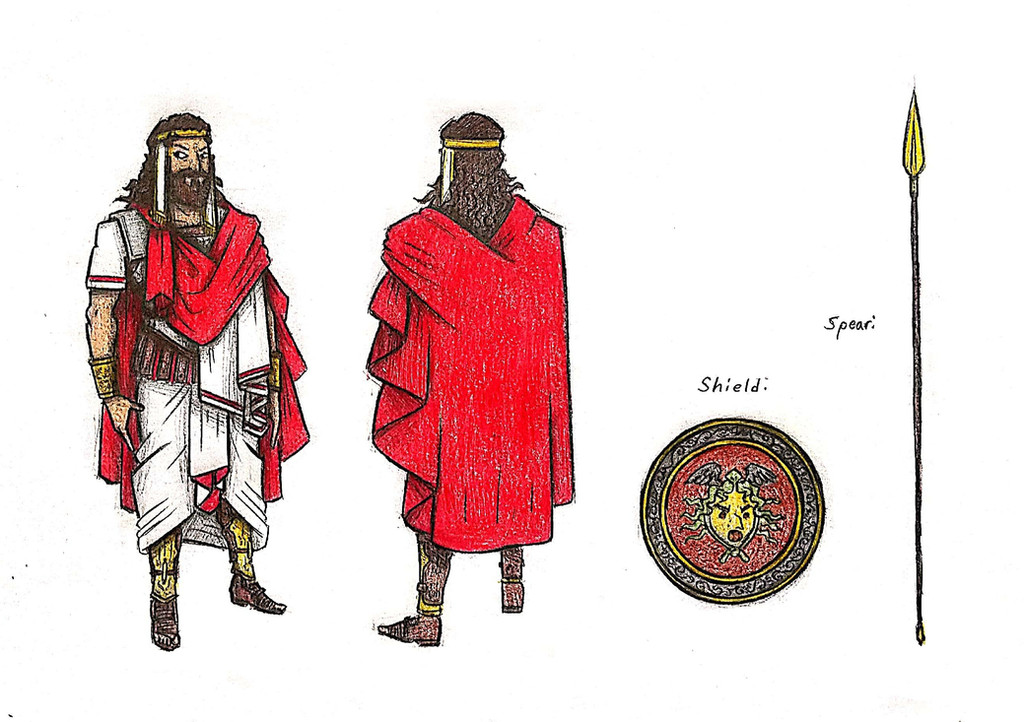HOME | DD
 Avapithecus — Peisistratus
Avapithecus — Peisistratus

#athens #character #design #greek #history #referencesheet #tyrant #peisistratus
Published: 2023-05-20 15:28:19 +0000 UTC; Views: 2642; Favourites: 24; Downloads: 0
Redirect to original
Description
While the rise of Athenian democracy as we know it is often credited to the legendary statesman Solon, one could argue that he merely laid the blueprint. Indeed, while Solon did open the Ecclesia to all Athenian citizens, and canceled the debt which forced many poor farmers to sell themselves into slavery to pay it off, he failed to actually address the systematic problems which led to those conditions in the first place. The aristocratic families still continued to bicker for influence and stack new debt back onto the poor. Sure, the peasants couldn't sell themselves into slavery anymore, but they still couldn't pay off the people who could afford to send thugs to collect. It also didn't help that to those he freed from slavery, Solon only returned the lands they owned before being enslaved, the very lands which failed to cultivate the debt payment in the first place, claiming that the poors' call for land distribution was "greedy". Because out of touch assholes who specialize in pretty words and wishful thinking are not a modern invention, apparently. Realistically, Solon didn't so much change the game as he did reshuffle the deck. From this reshuffle, three factions emerged to try and take control of Solon's dying Athens: the Plains folk, led by a man named Lycurgus and his fellow landowners, the Coastal folk, led by Megacles and his band of ancestral aristocrats, and lastly, the Hillfolk. The Hillfolk were the poorest of the three, being representative of Attica's growing merchant class. They were led by today's subject, Peisistratus (or "Pisistratus", if you're into that).Peisistratus was a military veteran who made a name for himself battling Athens's main rival, Megara, in 565 BCE. Returning from service in 561 BCE, it is said that he purposefully wounded himself and his mules, passing it off as battle scars to guilt the people into granting him a bodyguard detail. Now in control of a faction of professionally trained armed men, Peisistratus took the acropolis to crown himself tyrant of the city. Of course, there's nothing that gets bickering rich people to unite quite like armed peasants, so Lycurgus and Megacles combined their forces to oust Peisistratus from power in 556 or 555 BCE, sources differ. This is where it gets downright comedic though, as the Plains and Coastal factions almost immediately went back to fighting one another, and within a year, Megacles was scheming to reinstall Peisistratus. So the story goes, the way they convinced the populace to welcome Peisistratus back as their tyrant was to dress some random chick up as the goddess Athena, parade her through town on a chariot, and have her proclaim that the gods advocate for Peisistratus. And apparently, the citizens just kind of fell for it and said yeah let him back in, I'll buy that. The funniest part of this whole endeavor is that even Herodotus calls bullshit on the realism of this story when he reports it in his Histories. Like damn, you know you're spinning some flimsy ass lies if even Herodotus is calling you out for it. Peisistratus would eventually be overthrown again by Megacles in 547 BCE, but he came back to finish off the Coastal folk with the help of Theben mercenaries the next year.
Ultimately, it seems the population really just had no incentive not to welcome him back both times. While it is reported that he ruled with a firm hand, it was no less fair, or at least more fair than the previous aristocratic asshats. Unlike Solon, he looked at the strife of the poor and actually used the state's resources to alleviate their woes. He offered government loans to peasant farmers, and in rare cases even broke up the estates of the exiled upper class to distribute to those in need. Which is probably why there was a mass exodus of aristocrats who would later go on to whine about the totally evil and totes unfair tyrant Peisistratus. That, and the fact that he instituted a hard 10% flat on all produce, proportional to the income of each citizen, so that poor farmers wouldn't be crushed by the debt, and rich folk would be forced to chip in their fair share. Turns out, rich people have always bitched about paying taxes, and have always preferred to just vacate the premises before ever handing over their precious pennies.
Peisistratus's long game also encouraged the wellbeing of the common people. He insisted the farmers of Attica should begin planting olive trees as a primary cash crop. Before, this was unfeasible, as olive trees take a decade to grow and no political power cared or lived long enough to see the project through. The long and stable reign of Peisistratus however gave them just enough time to get their footing with the crop and transform the economy for the better. Peisistratus even set up a committee of judges to travel throughout the hills and fields to regularly address individual rural problems and report them directly to him. Peisistratus also sponsored massive building projects and state religious festivals in order to create employment and increase national pride. This was the beginning of Athens's cultural renaissance, an era of great art and poetry which by the next century would culminate in the golden age of Pericles. For the first time in a long while, Athenians felt that they could rely on their government to better their lives and hear their voices, which would prove a crucial step on the road to democracy. Though, Peisistratus would not live to see its final form, dying in 527 BCE and leaving his position to his sons Hipparchus and Hippias.
Design notes, I took reference from a couple images of Peisistratus. For the armor underneath his robes, I referenced an illustration done by Ambrose Dudley for the 1915 edition of Hutchinson's History of the Nations. It's simple, but I think that's its strength in this case. His robes meanwhile were derived from an illustration sourced from the same 1838 book with the ridiculous German title that I mentioned in the Polycrates entry. That's also where I referenced the design for his shield from. Okay yes, in the illustration it's clearly meant to be Athena's shield, but since we all know that this "Athena" was in big old quotation marks, I think it's fair enough to extrapolate it was on loan from Peisistratus. The D&D game I ran was of course set in 526 BCE, which would've been just after the historical death of Peisistratus. However, in the story I got around this by the bad guy magically reanimating him to join in his crusade against the party, playing on Peisistratus's fears that his sons would succumb to the same political bickering which had ruined Athens before. Of course, one of my party members ultimately decapitated him to break his naval blockade so… at least he wouldn't live to see that happen either way.























